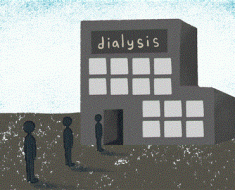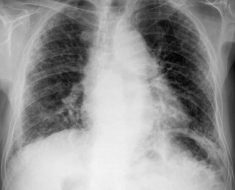Catholic Health Initiatives, which operates 100 hospitals in 18 states, has adopted what it calls a Total Health Roadmap that integrates screenings for basic human needs into its primary care settings.
These needs represent a range of physical, social and psychological issues, such as availability of food and safe housing, transportation, quality child care, access to behavioral health treatment, and more.
Last year, Catholic Health Initiatives received a $2.5 million grant from the Robert Wood Johnson Foundation to support the program, which was matched by Catholic Health Initiatives’ Mission and Ministry Fund. Catholic Health Initiatives has launched the program in three of its largest markets.
THE PROBLEM
“Our work entails the integration of universal screening of patient needs related to the social determinants of health and the integration of community health workers in the primary care clinical team to assist providers and patients with addressing these needs,” said Elizabeth Miller Evans, program director of Catholic Health Initiatives’ National Foundation.
To support these efforts, Evans said the provider organization needed technology that could support five important elements:
1) It needed to develop methods for tracking screening administration and results.
2) It needed to develop methods for tracking actions taken by community health workers and patients on screening results.
3) It needed to develop methods for tracking how it closed the loop on referrals and followed up with patients to determine if they had their needs met.
4) It needed to develop a living database of community resources to assist staff with knowing what resources are available in the communities, and additional information such as capacity, eligibility, operating hours, key contacts and mapping functions to assist community health workers and patients with identifying good options for resources.
5) It needed to plan for future integration of the technology solution for the first four items into clinic EHRs, as the organization aspires to have this information as part of the patient’s legal medical record, and staff seek to tie their work with social needs to the clinical needs and outcomes of patients.
“We knew from the start that paper-based processes were not going to provide us the quality of data that we needed, and that data collection and management were going to be a significant burden for project staff and the community health workers,” Evans said.
“Innovations such as the work of the Total Health Roadmap are at a critical point in development, and we need better data collection and management to understand what patient needs are and how communities are positioned to meet those needs through local agencies,” she explained.
For a nonprofit health system, achieving universal screening for basic needs represents another level of community health needs assessment. In addition, Catholic Health Initiatives is learning about the barriers its patients face in accessing resources, and this understanding will help the health system be a better partner with community agencies and support more effective change, Evans added.
PROPOSAL
Clinic EHRs, according to Evans, did not have the capacity to support any of these five elements, with the exception of the screening step.
“We modeled our approach on the frameworks developed by Health Leads Reach and its Healthify platform,” she explained. “However, each of our pilot health systems – Centura Health in Colorado, Mercy Health Network in Iowa, and KentuckyOne Health in Kentucky – chose different approaches according to what assets were already in place within their systems.”
Centura Health uses Epic as its EHR, and the screening tool was built in the clinic EHR. Centura is developing case management functions as well, and it has integrated Aunt Bertha software for management of a resource database as well as some case management functions. Aunt Bertha has developed full integration with Epic.
“Our work entails the integration of universal screening of patient needs related to the social determinants of health and the integration of community health workers in the primary care clinical team to assist providers and patients with addressing these needs.”
Elizabeth Miller Evans, Catholic Health Initiatives
Mercy Health Network has a well-developed ACO, and it had worked with social determinants of health platform vendor TavHealth in the past. However, Mercy ended up building its own system (DataShop) in partnership with Innovaccer. When Mercy joined the Total Health Roadmap work, it chose to add these functions to DataShop – so it is working through this development and it also is developing an electronic screening process that will feed directly into DataShop.
KentuckyOne started with resource database and case management technology vendor Health Leads Reach. Catholic Health Initiatives has an ongoing working relationship with Health Leads Reach and the vendor’s software was built specifically for this type of work. Health Leads Reach is based on the Salesforce platform, which provides an open API and technological flexibility.
MARKETPLACE
Catholic Health Initiatives is merging a variety of technologies to enable its social determinants of health data collection and management system. It’s approaching data and case management in a unique way. However, there are vendors in the market today that offer, specifically, data management capabilities. These vendors include Amitech, Ataccama, Bridgehead Software, Hewlett Packard Enterprise, Hortonworks, IBM, Informatica, Oracle, Panoply.io, Pivotal and Snowflake.
MEETING THE CHALLENGE
“We are still working through challenges of refining tools in each of the three pilot markets,” Evans said. “The software is intended primarily for use by the community health workers for the review of screening results and working with patients to identify good resources for referral.”
The software also is intended to assist community health workers with recording the results of the referrals made – needs were met/partially met/not met – and record notes regarding these outcomes. Program coordinators in each community use the software to monitor caseloads and case mixes for community health workers so that the health system is better informed about how to integrate community health workers and support their work.
In addition, data from the resources accessed is reviewed to determine where gaps in local agency capacity may exist so that the health system can use this information, with community partners, to address the gaps.
“Eventually, we want this software to be fully integrated or accessible through clinic EHRs so that the work of our community health workers is visible alongside that of our clinicians,” Evans said. “We seek to be able to track health outcomes in parallel to social outcomes.”
RESULTS
Catholic Health Initiatives still is very early in the implementation of the new technology, and it said it has a lot of work to do in refinement and transition from current paper-based/Excel spreadsheet processes to electronic processes before it can demonstrate hard results.
“One thing is for sure: Developing technology to support the community health workers was a must,” Evans stated. “We are hearing from our community health workers that the burden of paper- or Excel-based recording and tracking is time-intensive, requiring manual entry of screening results into Excel spreadsheets, the multistep process of reviewing needs and linking resources to specific patient needs, and more.”
Further, Catholic Health Initiatives needs to have good data on as close to a real-time basis to monitor the effectiveness of its work and where it needs to make adjustments in its approach according to the scope and depth of needs identified in patient panels, she added.
ADVICE FOR OTHERS
“In Colorado, the health system’s insistence that we develop the screener in Epic led to some delays in implementation, and we are still working through the integration of Aunt Bertha,” Evans explained. “But Centura IT is on board and the integration of the screener into the EHR is an important step toward full integration.”
In Iowa, the development of DataShop functionalities have been based on the actual needs and workflows of the community health workers in the clinics. This proved to be a real plus, as Mercy has been able to work through key elements of workflows and clinical needs all along, Evans said.
“Unfortunately, due to system shifts, we have not had as much upfront technology support for the integration of the Health Leads Reach tool in Kentucky,” she said. “While the tool itself has all the functionalities we want, we are still unsure about how we will integrate with the EHR in the long term.”
Twitter: @SiwickiHealthIT
Email the writer: [email protected]
Source: Read Full Article






